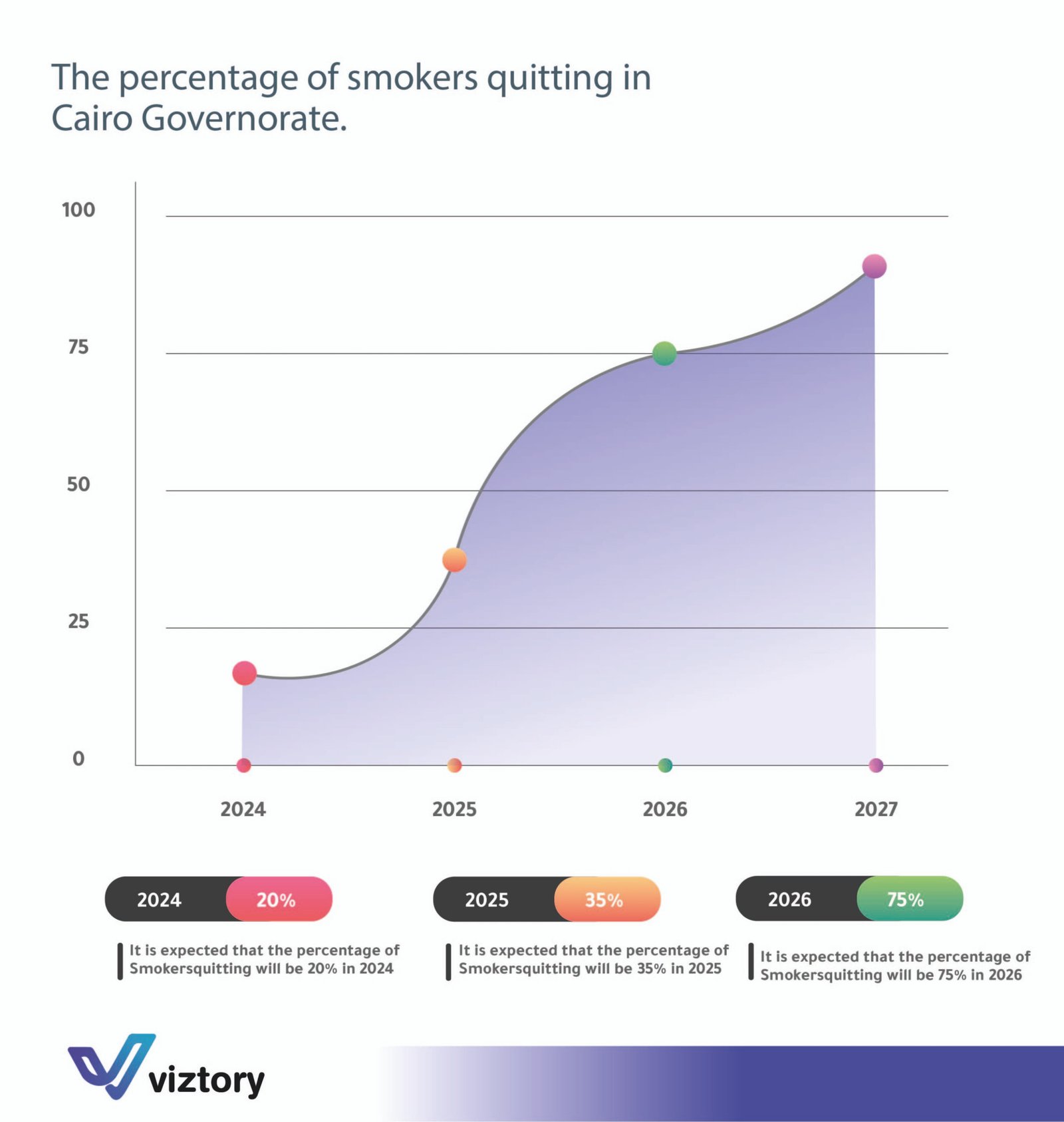Promising Trends in Smoking Cessation: Insights from Cairo Governorate
-
May, Sat, 2024
Promising Trends in Smoking Cessation: Insights from Cairo Governorate
Smoking remains one of the leading causes of preventable diseases worldwide. However, recent data from Cairo Governorate highlights a promising trend in smoking cessation. This article delves into the statistics presented in the latest infographic, shedding light on the anticipated progress in the fight against tobacco addiction.
Rising Rates of Smoking Cessation
The infographic presents a positive outlook on smoking cessation over the next few years in Cairo Governorate. Here are the key projections:
2024:
- Percentage: 20%
- Insight: It is expected that 20% of smokers in Cairo will quit smoking by 2024. This marks a significant starting point in the region’s efforts to combat smoking-related health issues.
2025:
- Percentage: 35%
- Insight: The percentage of smokers quitting is projected to rise to 35% in 2025. This increase reflects the growing awareness and effectiveness of smoking cessation programs and policies.
2026:
- Percentage: 75%
- Insight: By 2026, the percentage of smokers quitting is expected to reach an impressive 75%. This substantial jump indicates a major breakthrough in public health initiatives and individual commitment to quitting smoking.
2027:
- Projected Continuation: While the exact percentage for 2027 is not provided, the trend suggests a continued positive trajectory, potentially achieving near-total cessation among smokers in the region.
Factors Contributing to the Trend
Several factors are likely contributing to these promising trends in smoking cessation:
Public Health Campaigns:
- Education and Awareness: Ongoing public health campaigns have been instrumental in educating the population about the dangers of smoking and the benefits of quitting. These campaigns often include compelling messages, visual aids, and testimonials from former smokers.
Access to Resources:
- Support Programs: Increased availability of smoking cessation programs, including counseling, support groups, and nicotine replacement therapies, has made it easier for smokers to access the help they need to quit.
Policy Interventions:
- Regulations and Taxes: Stricter regulations on tobacco sales, advertising, and smoking in public places, along with higher taxes on tobacco products, have created an environment that discourages smoking and encourages quitting.
Community Support:
- Social Influence: Community support and social networks play a crucial role in motivating individuals to quit smoking. The rising trend indicates a collective effort towards a healthier lifestyle.
Conclusion
The projected increase in smoking cessation rates in Cairo Governorate is a testament to the effectiveness of comprehensive public health strategies and the determination of individuals to improve their health. As we look forward to the coming years, it is essential to continue supporting these efforts and encouraging smokers to take the bold step towards a smoke-free life.
This positive trend not only enhances the well-being of individuals but also contributes to the overall health of the community. With sustained efforts, Cairo Governorate is on track to becoming a leading example in the global fight against tobacco addiction.

